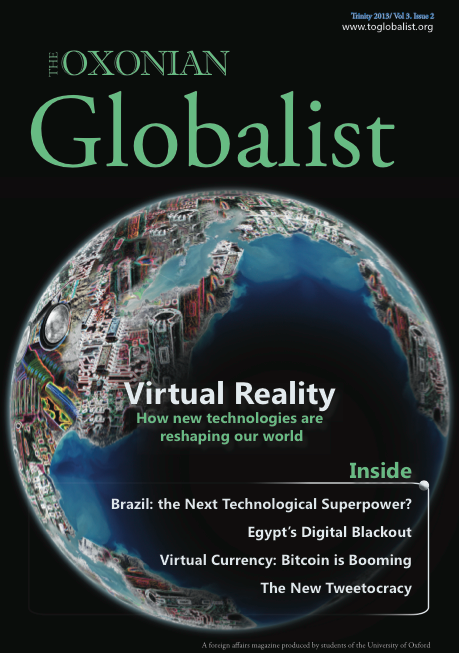In March 2013, I was traveling in South Africa for research purposes during Israeli Apartheid Week (IAW). IAW is an international—though de-centralised and locally organised—annual movement that arranges a series of events and campaigns, largely on university campuses across the globe. The aim, to quote the website (http://apartheidweek.org/), is “to raise awareness about Israel’s policies towards the Palestinians and to build the support for the growing Boycott, Divestment, and Sanctions (BDS) campaign.” Events include seminars with established academics, talks from Palestinian refugees, discussions between NGOs and political representatives, and more participatory and symbolic demonstrations.
Although IAW claims that it uses the term “apartheid” in its strict legal definition, there is clearly a tactical and historical underpinning to the deployment of this term, especially in the context of international solidarity and the methods of resistance such as boycott that IAW promotes. The international grassroots movement in the latter half of the twentieth century against the apartheid regime of South Africa was fundamental in (though certainly only one dimension of) the dismantling of that racist government (http://www.aamarchives.org/). Clearly, IAW seeks to invoke comparative parallels between the resistance to South African apartheid and its own project in order to gain political and historical weight—a quotation from Naomi Klein in IAW’s promotional video is emblematic of this comparativism (http://www.youtube.com/watch?v=peWqnYLyv7M): what is needed to end Israel’s ongoing occupation of Palestine, she claims, is the “kind of global movement that put an end to apartheid in South Africa”. Though there can be no doubt that the use of such an historically loaded and, quite rightly, demonised term helps generate international attention, within the current mainstream-media discourse around Palestine/Israel it does this as much through its controversiality as it does its comparative accuracy. Indeed, the recent outcry that flew up around US Secretary of State John Kerry’s reported use of the term in April 2014 to describe not what Israel is, but what it might become in the future, is demonstrative of the tensions associated with the term apartheid (http://972mag.com/call-it-colonialism-call-it-occupation-just-dont-call-it-apartheid/90537/). It’s no surprise that Kerry has had to publicly withdraw, and apologise for (http://www.theguardian.com/world/2014/apr/29/john-kerry-apologises-israel-apartheid-remarks), the comment.
The politics of this historical comparison were emphasised, for me, simply by walking through Wits University in Johannesburg, once the archetypal apartheid city, and still an economically segregated urban centre cut through with borders and barriers. The IAW campaigners there had set up, alongside a powerful photo exhibition of scenes from occupied Palestine, a large “wall” outside the campus’s food court. This had then been covered in anti-Israeli graffiti, including denotations of the apartheid-nature of that state. The intention was, of course, to invoke the Wall that now winds its way through the West Bank, a structure that has been transformed into the symbolic epitome of Israeli apartheid by various NGOs and human rights campaigns, as well as in a number of cultural representations, from Eran Riklis’s excellent film, Lemon Tree (2008), to the British novelist William Sutcliffe’s latest offering, The Wall (2013). Interestingly enough, and as Israeli architect Eyal Weizman—whose book Hollow Land provides a thorough analysis of the political underpinnings of Israeli architecture—points out, the Wall is the one thing that South Africa never implemented. Though, of course, urban planning and spatial distribution was central to maintaining South Africa’s apartheid policies, it was never quite so literally, and symbolically, consolidated in one architectural structure. This is largely due to white South Africa’s reliance on black labour, a socioeconomic dynamic demanding a more nuanced architectural regime that both separated races whilst also allowing certain people to pass through those same boundaries with systematic, if tightly monitored, regularity.
Given the geographical and historical immediacy of South Africa’s own apartheid government, the impact of IAW’s Wits campaign was striking. Nevertheless, towards the end of Wits’s IAW I picked up that week’s edition of the student paper to see on the front page a photograph of the fake “wall” that had been occupying the campus for the preceding days. In an inversion of the graffiti resistance to the Wall that has become so poignant in the West Bank, the IAW’s temporary structure had been “vandalised”. The anti-Israeli graffiti previously scrawled across the “wall” had been scribbled over with new graffiti that accused those who had erected it of “anti-semitism”. Unfortunately, the coverage and discussion of Israel’s occupation of Palestine that IAW had intended to generate had been swamped by the politics of the historical comparison embedded within its title.

An Apartheid cartoon by Carlos Latuff, provoking the historical comparison between South African and Israeli apartheid
Historically, and as Illan Pappe, Israeli historian, argues in his most famous book, The Ethnic Cleansing of Palestine (2006), Israel has been concerned with the dispossession and evacuation of Palestinians from their territories. In distinct contrast to South Africa, Israel never intended to retain the occupied population within its borders. This policy of driving out the indigenous inhabitants of the land does not require the nuanced legal apparatus of apartheid, specifically designed to funnel and circulate two racial populations within the same territory whilst also keeping them separate. Instead, Israel’s legal policies have sought primarily to expel the Palestinians from its geographical terrain and prevent them from returning, a policy manifesting physically and obviously in the Wall, as well as the strict and complex system of checkpoints restricting movement between Israel and Palestinian enclaves.
However, this has started to change. The Israeli government’s recent intensification of colonial settlement and its plans to annex unilaterally Area C (about 40% of the West Bank that, since the Oslo Peace Talks between Israeli and Palestinian leaders in 1993, has been under full Israeli control) raises a fundamental paradox. Whilst increasing Israeli territory, by its very nature settler colonialism also increases the Palestinian demographic within the state of Israel, thus potentially endangering the rigid systems of expulsion that have dominated Israeli policy since the nation’s inception in 1948. The grim logic of Israel’s recent territorial expansion is the emergence of a new legal infrastructure to regulate, segregate and control this increasing demographic. It is for this reason that since 2009 the Israeli government has begun instituting laws that resemble the legal apparatus of South African apartheid more than ever before. From the Nakba Law of 2009 that prohibits the commemoration of Israel’s day of independence as a tragic historical event, to the 2011 amendment to the Citizenship Law of 1952 that makes it possible to legally define support for the Palestinian struggle as a terrorist act, Palestinians within Israel are increasingly ostracised, oppressed, and spatially and culturally removed to the margins of its society where they live as second-class citizens. Though when IAW started in 2005 there was, perhaps, a political more than descriptive choice underpinning the use of the word “apartheid”, it would appear that in recent years the campaign has, in fact, come to be increasingly justified in its historically comparative connotations.
Nevertheless, regardless of these legal and historical nuances, using the term “apartheid” to describe the Israeli occupation, especially on an international stage, will inevitably be divisive. Whether it is legally accurate or not, the concern of this writer is that the rhetorical dimension of this label might alienate those who are interested in questioning and interrogating the nature of Israeli governance and expansion but that view the implicit historical comparison embedded within it to be extreme and hyperbolic. As readers who have attended public seminars and talks on the Palestine/Israel conflict will know, comments and questions can quickly become shrill and ideologically inflected speech-making rather than a healthily interrogative pursuit of a fuller understanding of the illegality of Israeli occupation and expansion. The worry is that, by framing these important interventions beneath such a provocative, even if increasingly accurate, political title, IAW might alienate those who are undecided about the conflict and obscure the imperative political issues at the heart of its campaign.




